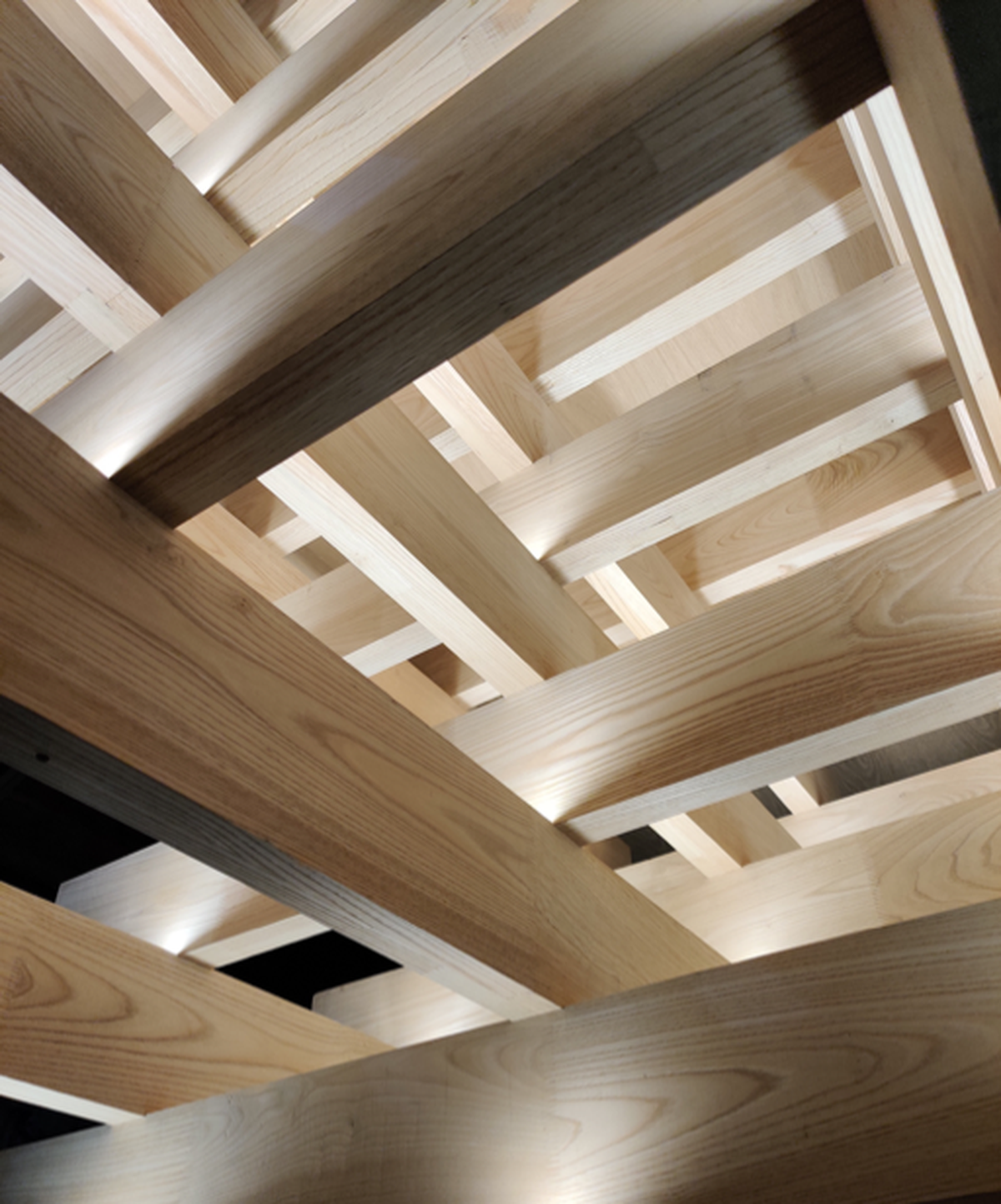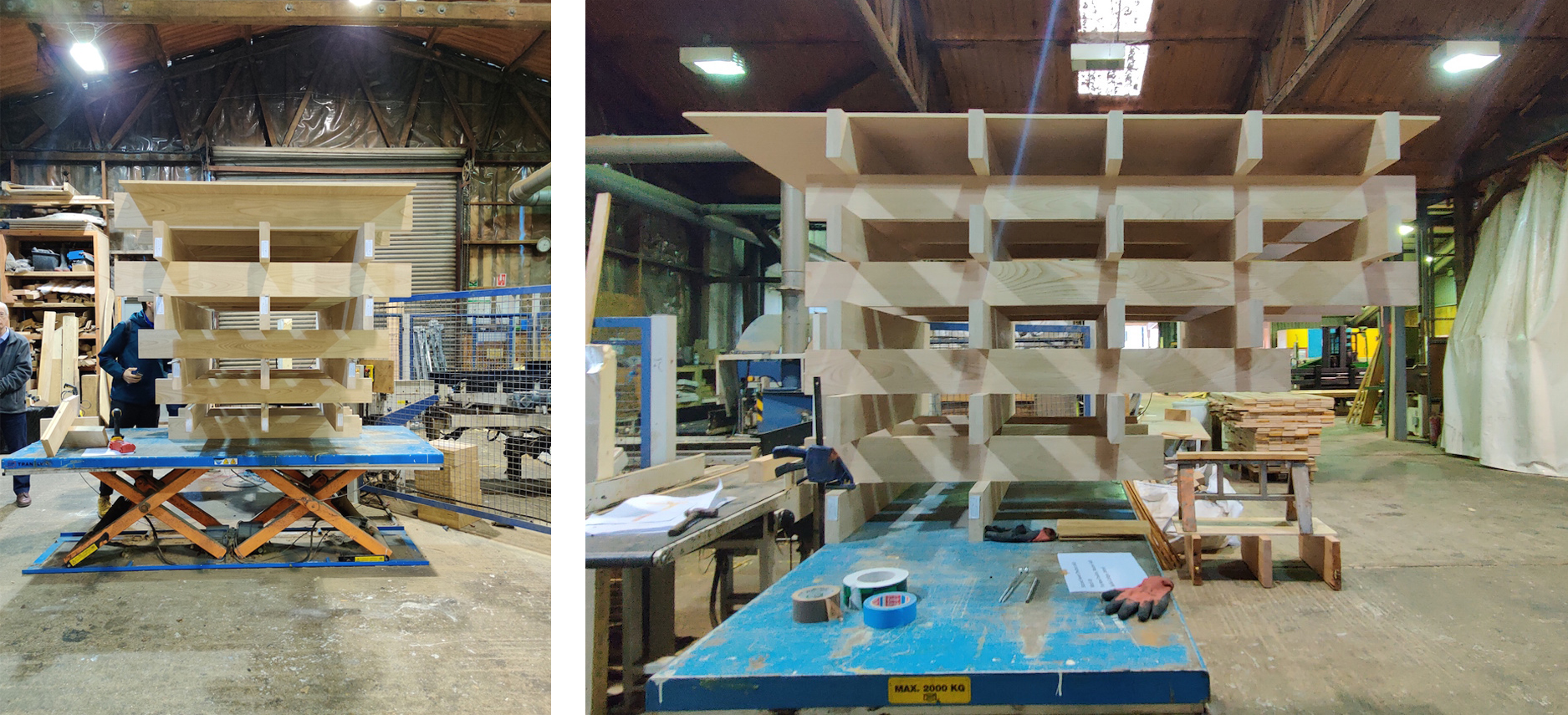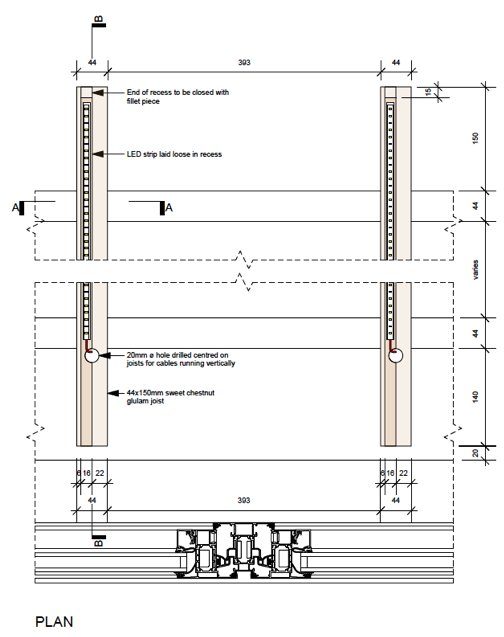BALLIOL COLLEGE, SPORTS PAVILION
NOVEMBER 2019

7:45 AM, London Bridge. The train from Uckfield just entered the station and is spitting out hundreds of commuters, flowing past us. We hop on the now empty train and leave London to visit our timber sub-contractor’s workshop in East Sussex.
We are fast approaching the construction stage of our Sports Pavilion project for Balliol College in Oxford and were invited to review a mock-up of the roof structure. The pavilion roof is formed of slender sweet chestnut glulam joists; 10 layers are stacked on top of each other, each layer cantilevering further into the space, creating a coffer.

1:50 model
From outside the roof structure expresses itself as a lantern, popping up in the centre of the building. The lantern is fully glazed, allowing for rays of sunshine to enter through the stacked glulam. In the evening, the dense timber lattice will be highlighted by a subtle glow, originating from LED strips, that are recessed in the top of the glulam joists.

The mock-up in Inwood’s (timber sub-contractor) workshop


Lighting strategy detail plan and section
The mock-up was used to test the connection details between the individual layers of glulam, the construction sequence, and the integration of the LED strips and the associated wiring. Preceding the assembly of this mock-up, these details have been worked through and coordinated in many lengthy design workshops, involving the contractor, structural and electrical engineers, the timber sub-contractor, electricians and us architects. As such, it was even more enjoyable to review the mock-up with all the parties involved and to see our combined efforts bearing fruit.

The carpenters who built the mock-up and the Electrical Engineer, Design Manager, and Architect discussing the installation and accessibility of the LED strips
NIALL MCLAUGHLIN RECEIVES AN HONORARY ROYAL DESIGNER FOR INDUSTRY AWARD
DECEMBER 2015
The title ‘Royal Designer for Industry’ is awarded annually by the Royal Society of Arts to designers of all disciplines who have achieved ‘sustained design excellence, work of aesthetic value and significant benefit to society’. The RDI is the highest accolade for designers in the UK; only 200 designers can hold the title and non-UK designers may receive the honorary title Hon RDI.
This year there were 8 RDI’s awarded. Alongside Niall McLaughlin were Ronan Bouroullec and Erwan Bouroullec who both also received an Hon RDI for their progressive and influential work across products, furniture and public spaces and impact on contemporary design culture, Michael Anastassiades RDI for his excellence and innovation in lighting design and supporting young designers, manufacturing and making in the UK, Kate Blee RDI for contributing her outstanding expertise in textiles to social investment projects and therapeutic public spaces, Kim Colin RDI for her sustained excellence in product design and applying design thinking to create thriving and sustainable enterprises, Karen Nicol RDI for pushing new boundaries in fabric and stitch design, promoting recycled textiles and designing for Fine Cell Work that teaches creative needlework to prisoners and David Pearson RDI for his distinctive and innovative contribution to British publishing and commitment to design education.
The Royal Society of Art’s Chief Executive Matthew Taylor commented ‘The RSA is committed to encouraging and rewarding outstanding designers who challenge convention, discover new insights, and improve our quality of life. These eight leading practitioners are from wide-ranging disciplines and are united by a driving commitment to innovate, create, educate and inspire others through design’.
Current architects with the title of Royal Designer of Industry are; David Chipperfield, Peter Clegg, Edward Cullinan, Norman Foster, Eva Jiricna, John Pawson, Alan Stanton, Sarah Wigglesworth, and Paul Williams.
Current architects with the title of Honorary Royal Designers are; Mario Bellini, Andrea Branzi, Antonio Citterio, and Peter Zumthor.





